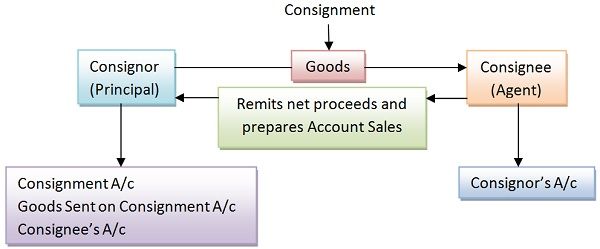
The consignment consisted of 19 tons, and were sold by auction, mostly being bought by a local “fertiliser” merchant. Among the things she brought back—more as a curiosity than as an article of cargo—was a consignment of Chinese firecrackers. I have previously drawn attention to the cargo aboard Flight 370, which included a large consignment of lithium-ion batteries.
Pros for consignors
- As a young journalist, though, I did not have a lot of money to spend on this quest, so I scoured the plethora of shops in town that specialized in used or consignment board sales.
- Artists (consignors) entrust their artwork to galleries (consignees).
- The party that sells the goods on consignment receives a portion of the profits, either as a flat rate fee or commission.
EBay, drop-off stores and online sellers often use the consignment model of selling. Art galleries, as well, often operate as consignees of the artist. They showcase your items, market them to potential buyers, and handle all the sales details.
Examples
In the UK, the term “consignment” is not used, and consignment shops that sell women’s clothing are called “dress agencies”. Although the other types of consignment shop exist, there is no general term for them. Providing or producing products for sale by consignment can mean a far bigger audience for your goods, and more sales. On the other hand, you’ll have to pay a commission fee if you make a sale, and this can be a significant proportion of the value of the product. Consignment arrangements, however, would not include retailers such as Walmart or most supermarkets, which purchase goods outright from wholesalers and then sell their items at a markup.
How do I choose the right consignment store for my items?
“Consignment only” refers to a unique selling arrangement, where you retain ownership of your item until it sells. You entrust your goods to a store or platform (the consignee) to market and sell on your behalf. For example, an artist might have five large pieces of artwork to sell but has no cash payment or cash disbursement journal calculation place to showcase the work for prospective buyers. The artist decides to employ an art gallery to show and sell their works of art. The gallery does not charge the artist a fee for the wall space but will charge a sales commission for any works sold, which is incorporated into the price.
Popular products in the consignment world

“Consignment shop” is an American term for shops, usually second-hand, that sell used goods for owners (consignors), typically at a lower cost than new goods. Not all second-hand shops are consignment shops, and not all consignment shops are second-hand shops. In consignment shops, it is usually understood that the consignee (the seller) pays the consignor (the person who owns the item) a portion of the proceeds from the sale. They can be chain stores, like the Buffalo Exchange or individual boutique stores. The consignor retains title to the item and can end the arrangement at any time by requesting its return. A specified time is commonly arranged after which if the item does not sell, the owner is expected to reclaim it (if it is not reclaimed within a specified period, the seller can dispose of the item at discretion).
Depending on the consignment shop and the item being sold, the seller may concede 25% to 60% of the sales price in consignment fees. Another example of consignment would be Bethany visiting her grandmother’s house and finding an old case full of clothes from the 1940s. She keeps a few pieces that she likes and decides to sell the rest. She takes the clothes to a thrift store to sell the clothes on consignment.
The consignment shop will generally take control of every aspect of marketing and presentation for a given product. This can mean that products are presented in a way that the owner or producer does not approve of. Sometimes, issues like this are covered in consignment agreements, but often selling on consignment means ceding a great deal of control to the consignment seller. When a consignor’s items sell (or in some cases, after the agreed-upon period ends), the consignee takes a share of the profits and pays the consignor the share. Consignment only refers to an arrangement where goods are placed in the care of store until the item is bought by a buyer.
Join millions of self-starters in getting business resources, tips, and inspiring stories in your inbox. In 1842, I determined to make the venture of sending a consignment of brass clocks to Old England. It seemed that the details of the trip to bring the consignment of furs across the border had been settled.
Once an item sells, the consignor receives a portion of the profits. Consignment shops differ from charity or thrift shops in which the original owners surrender both physical possession and legal title to the item as a charitable donation, and the seller retains all proceeds from the sale. With a resale business model, a store buys items outright and then sells them at a markup. With consignment, you retain ownership until the item sells, and then you share revenue with the store.




















